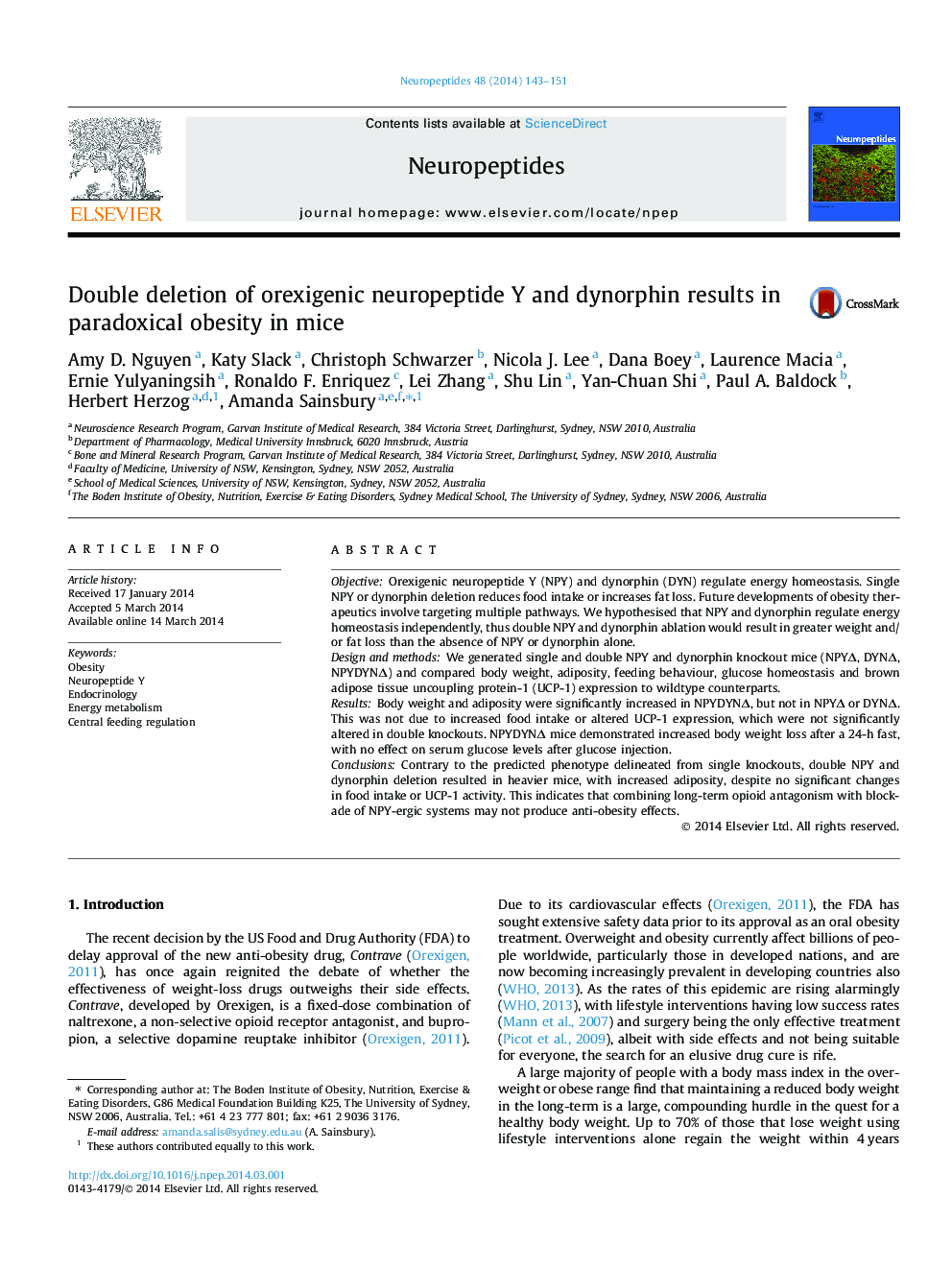| Article ID | Journal | Published Year | Pages | File Type |
|---|---|---|---|---|
| 2808045 | Neuropeptides | 2014 | 9 Pages |
ObjectiveOrexigenic neuropeptide Y (NPY) and dynorphin (DYN) regulate energy homeostasis. Single NPY or dynorphin deletion reduces food intake or increases fat loss. Future developments of obesity therapeutics involve targeting multiple pathways. We hypothesised that NPY and dynorphin regulate energy homeostasis independently, thus double NPY and dynorphin ablation would result in greater weight and/or fat loss than the absence of NPY or dynorphin alone.Design and methodsWe generated single and double NPY and dynorphin knockout mice (NPYΔ, DYNΔ, NPYDYNΔ) and compared body weight, adiposity, feeding behaviour, glucose homeostasis and brown adipose tissue uncoupling protein-1 (UCP-1) expression to wildtype counterparts.ResultsBody weight and adiposity were significantly increased in NPYDYNΔ, but not in NPYΔ or DYNΔ. This was not due to increased food intake or altered UCP-1 expression, which were not significantly altered in double knockouts. NPYDYNΔ mice demonstrated increased body weight loss after a 24-h fast, with no effect on serum glucose levels after glucose injection.ConclusionsContrary to the predicted phenotype delineated from single knockouts, double NPY and dynorphin deletion resulted in heavier mice, with increased adiposity, despite no significant changes in food intake or UCP-1 activity. This indicates that combining long-term opioid antagonism with blockade of NPY-ergic systems may not produce anti-obesity effects.
